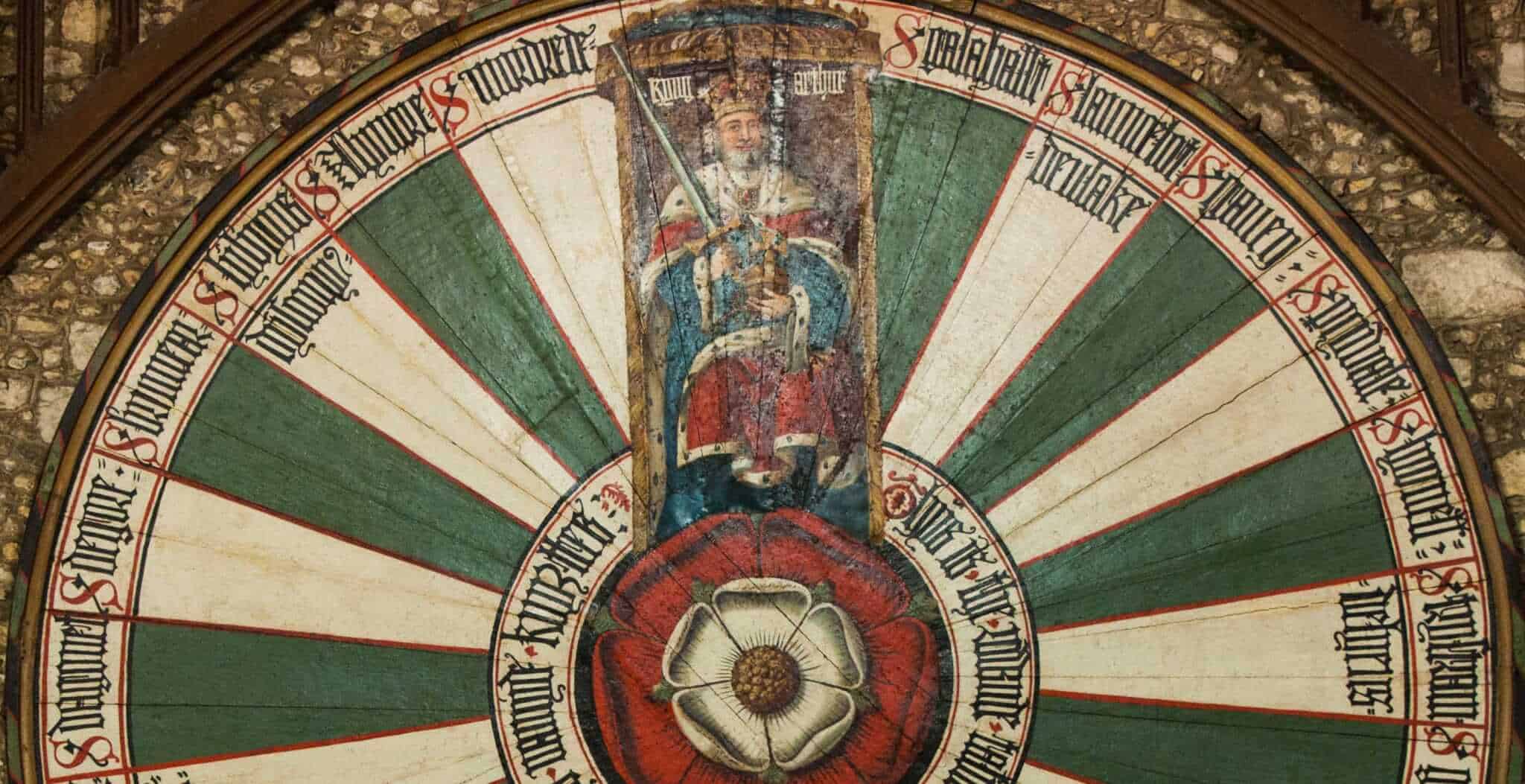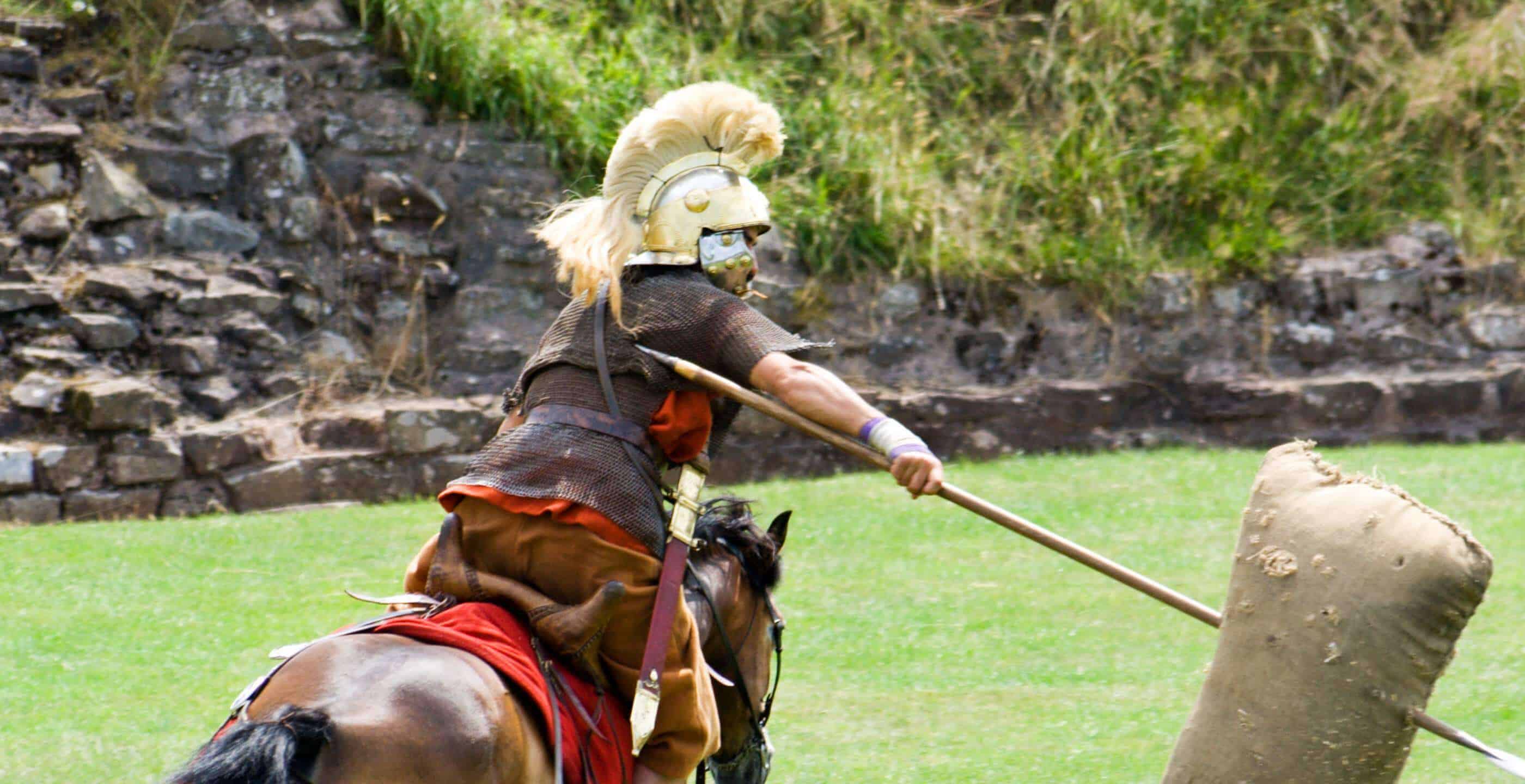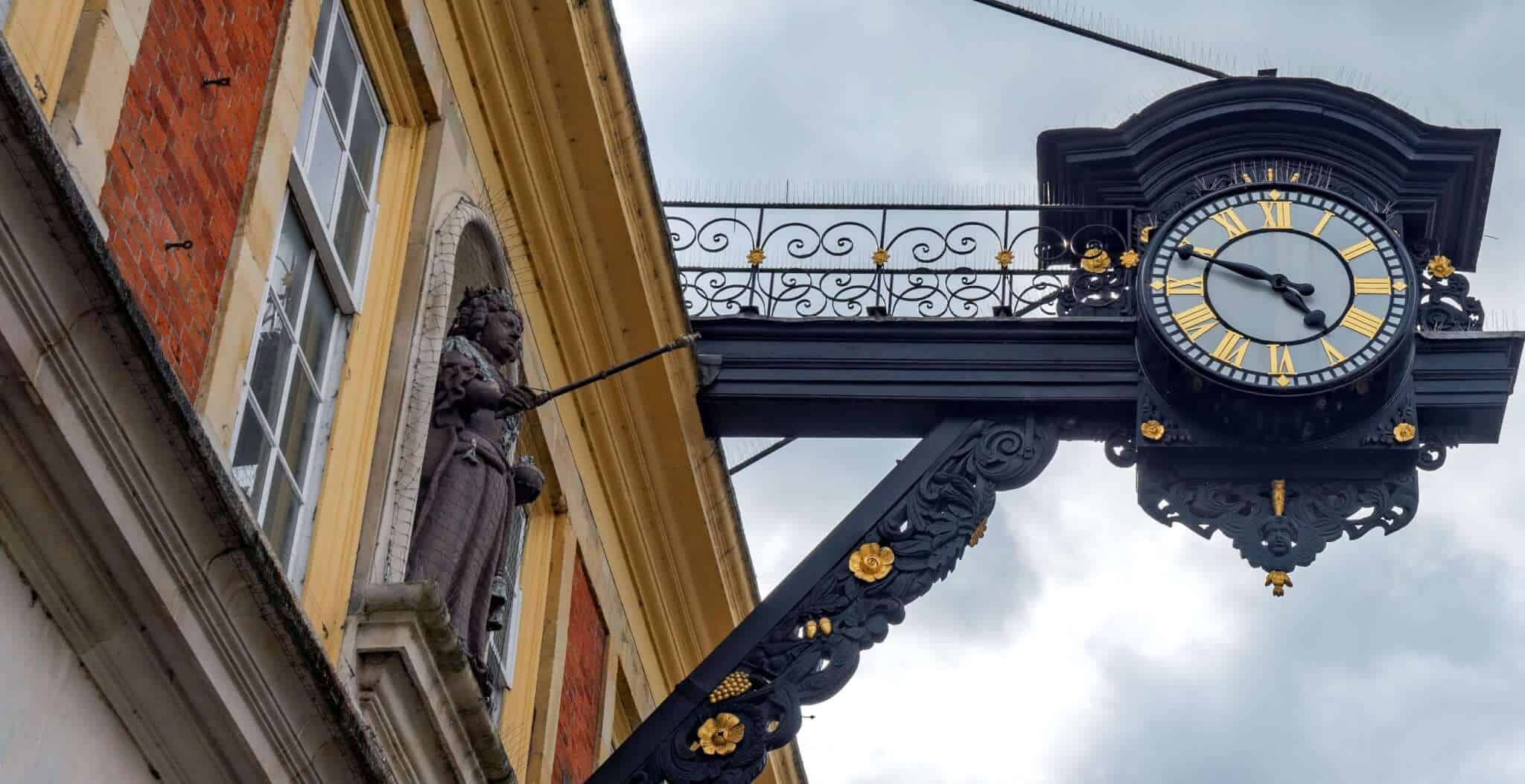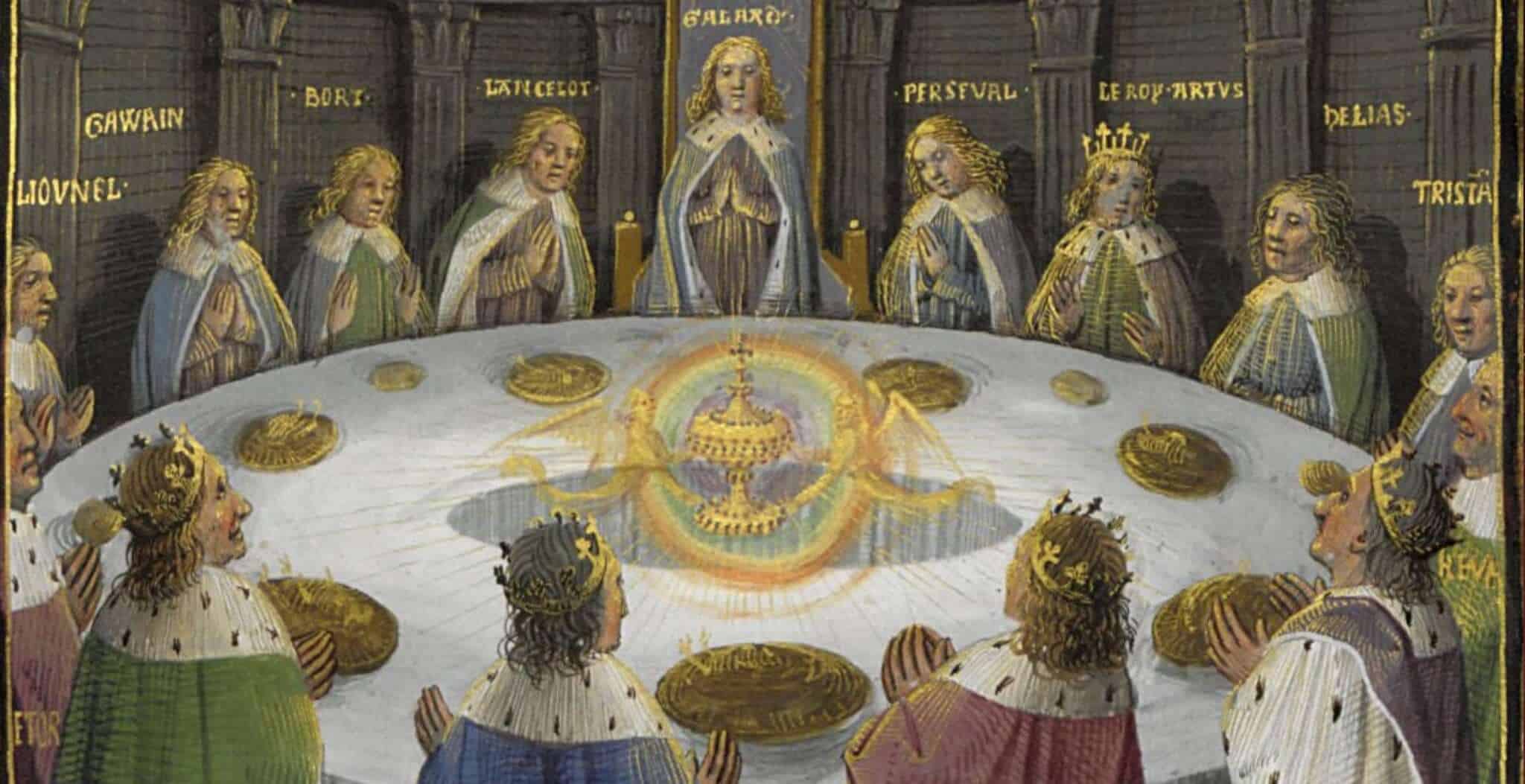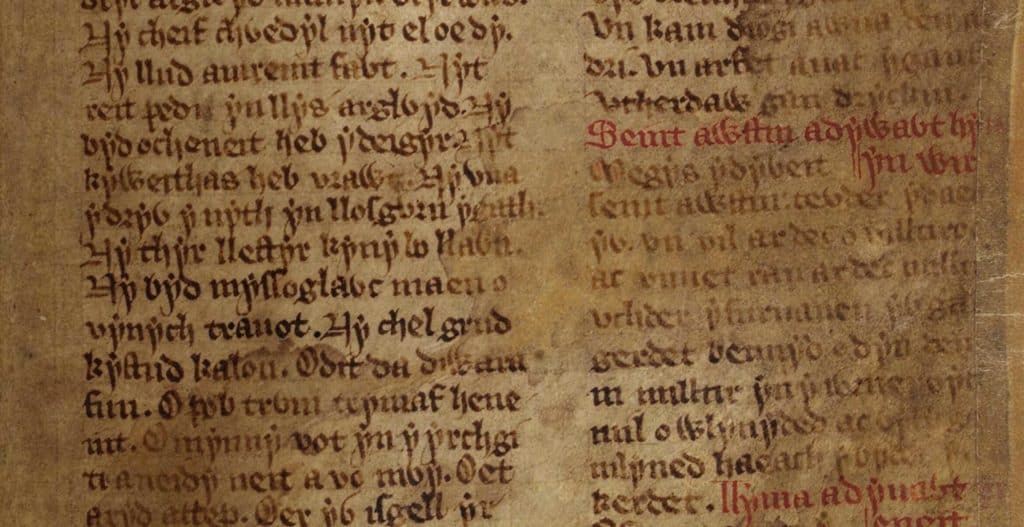Although most scholars regard it as being entirely fictional, there are many locations that have been linked with King Arthur’s Camelot. Camelot was the name of the place where King Arthur held court and was the location of the famous Round Table.
Perhaps a clue to its possible location might be found in the sources we have for the legend of King Arthur. Did he exist and if so, who was he? Was he perhaps a Romano-Celtic leader defending his lands from Anglo-Saxon invaders?
The earliest reference to Arthur is in a poem dating from around AD 594. Aneirin’s Y Gododdin is the earliest surviving Welsh poem and consists of a series of separate elegies to the men of the Gododdin who died at the Battle of Catraeth (believed to be modern day Catterick in Yorkshire), fighting against the Angles of Deira and Bernicia. Nearly all the Britons were killed and their lands absorbed into the Anglo-Saxon kingdoms. In one of these elegies a reference is made to Arthur, which suggests he was already a famous figure at the time of the poem’s original composition.
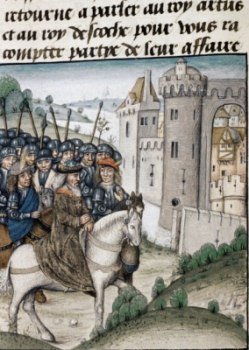
Camelot, from a 14th century manuscript
This is the earliest reference to Arthur. He appears again in the ‘History of the Britons’, written in AD 830 by Nennius, where he is depicted as a heroic general and a Christian warrior. Later references date from the early 12th century, and include Geoffrey of Monmouth’s chronicle Historia Regum Britanniae (“History of the Kings of Britain”), and later, the works of Chrétien de Troyes and Thomas Malory.
Let us look at the top four contenders for Camelot.
Caerleon, South Wales
Both Geoffrey of Monmouth and Chrétien de Troyes place Camelot, Arthur’s chief court and fortress, in Caerleon, South Wales, one of three Roman legionary forts in Britain. Although the name ‘Caerleon’ sounds typically Celtic, it is actually a corruption of the Latin words castrum (fortress) and legio (legion).
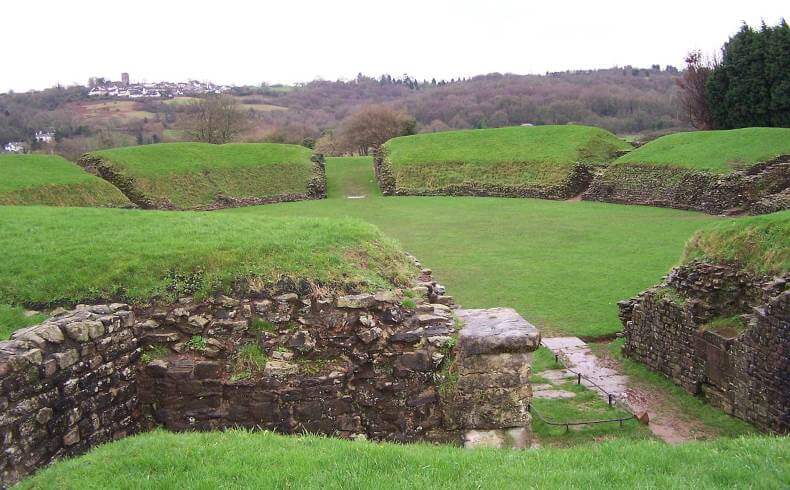
The Welsh are the direct descendants of the Romano-Britons of England and Wales, who were pushed back towards the west of Britain by the Anglo-Saxons in the 5th and 6th centuries. Arthur is considered by many to have been a Romano-British leader fighting the Anglo-Saxon invaders. So the placing of Camelot in Wales at Caerleon could be quite plausible.
The legend of Arthur and his knights also appears in The Mabinogion, a collection of eleven stories collated from early medieval Welsh manuscripts, intertwining pre-Christian Celtic mythology, folklore, tradition and history.
The Mabinogion tales were written down in the 14th century but it is widely acknowledged that the stories they are based on date from much earlier than this. The four ‘mabinogi’ tales are thought to be the earliest, dating from the 11th century. Five of the remaining stories involve the legend of Arthur and his knights, even including one of the earliest references to the Grail legend. Three of the Arthurian tales are set at ‘Arthur’s Court’.
If we look at Aneirin’s poem with its reference to Arthur written around AD 594, and then look at the Mabinogion stories, it appears that the tale of King Arthur is rooted in Welsh folklore, having been passed down through the ages in the oral tradition. If so, this may suggest that Arthur may indeed have been a real person and that some, if not all, of the deeds and accounts of him may be based in fact. Or it may be that ‘Arthur’ is a composite character incorporating the deeds of several British warriors and leaders of the 5th and 6th century.
Cadbury Castle, Somerset
Another candidate is Cadbury Castle, an Iron Age hill fort near Yeovil in Somerset, referred to as a location for Camelot by the antiquary John Leland in his Itinerary of 1542. Leland fervently believed that King Arthur was a real person and did exist in historical fact.

Following the withdrawal of the Romans in the mid 5th century, the site is thought to have been in use from then until around AD 580. Archaeological excavations on the site have revealed a substantial building which could have been a Great Hall. It is also clear that some of the Iron Age defences had been re-fortified, creating an extensive defensive site, larger than any other known fort of the period. Shards of pottery from the eastern Mediterranean were also found, showing wealth and trade. It therefore seems probable that this hill fort was the castle or palace of a Dark Ages ruler or king.
Local names and traditions seem to reinforce the links between Arthur’s Camelot and Cadbury Castle. Since the 16th century, the well on the way up the hill has been known locally as Arthur’s Well and the highest part of the hill has been known as Arthur’s Palace. Cadbury Castle is also situated not far from Glastonbury Tor, a location shrouded in mystery and legend. A causeway, known as King Arthur’s Hunting Track, links the two sites.
Also, according to tradition King Arthur, the legendary ‘Once and Future King’, sleeps in Cadbury Castle. The hill fort is supposedly hollow, and there he and his knights lie, ready until such time as England should need their services again. Indeed, every Midsummer Eve, King Arthur is supposed to lead a troop of mounted knights down the slopes of the hill.
Tintagel Castle, Tintagel, Cornwall.
In his “Historia Regum Britannae” Geoffrey of Monmouth wrote that Arthur was born in Cornwall at Tintagel Castle. Indeed a 1,500 year old piece of slate with two Latin inscriptions was found at Tintagel in the late 1980s, which would seem to link Arthur with Tintagel. The second inscription on the slate reads ” Artognou, father of a descendant of Coll, has had [this] made.” King Coel (Old King Cole of the nursery rhyme) is said by Geoffrey of Monmouth to be one of Arthur’s ancestors.
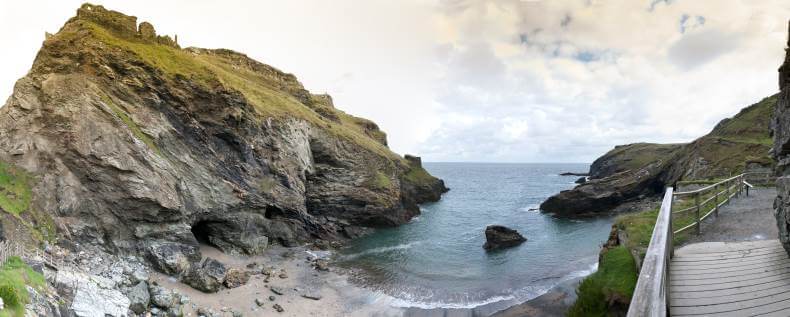
Recent excavations have revealed pottery from the 5th and 6th centuries, suggesting that this place was inhabited during the Romano-British period.
So if Tintagel was Arthur’s birthplace, was it also Camelot? We cannot be sure. Certainly the spectacular and dramatic setting of Tintagel Castle fits in perfectly with the romance of Arthur’s Camelot. However the castle there today was actually built in the early 1100s and so cannot be Camelot.
Winchester, Hampshire
One of the most famous accounts of Arthur and his knights is Thomas Malory’s 15th century work, Le Morte d’Arthur, a compilation of tales about King Arthur, Guinevere, Lancelot, and the Knights of the Round Table, taken from both French and English sources. Here it is said Winchester Castle was Camelot.
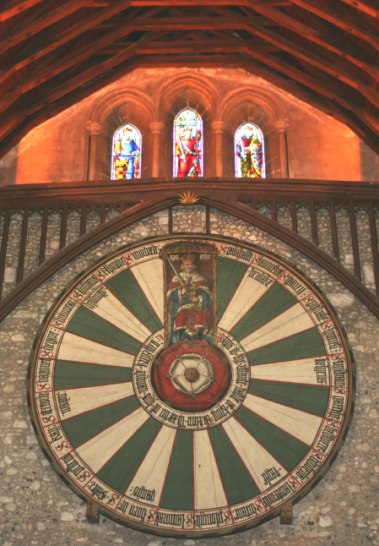
For hundreds of years, a round wooden tabletop has been displayed in the Great Hall at Winchester Castle in Hampshire. It is painted with the names of King Arthur and 24 knights, and shows their places around the table. In 1976 this round table was carbon-dated to around the turn of the 13th/14th century. It has hung in the Great Hall, Winchester since at least 1540, and possibly since as far back as 1348. It was almost certainly painted during the reign of Henry VIII in the early 1500s, as it has the Tudor rose at its centre and is thought to portray King Henry as Arthur on his throne, surrounded by the Knights of the Round Table.
Whilst Winchester Castle was built in the late 11th century, it is interesting to note that in the 9th century, the town of Winchester was the ancient court and capital of King Alfred the Great, a great warrior famous for defeating the Danish invaders and a great statesman, law maker and wise leader. Coincidentally, these are all traits that the legendary Arthur was supposed to possess: a successful warrior leading his people against invaders and at the same time, a wise and gracious leader.
The locations above are only four of the many places that have been associated with the Arthurian legend of Camelot. Other possible sites that have been put forward include the Castle of Dinerth; Edinburgh; the Roman fort of Camboglanna on Hadrian’s Wall; Colchester; Wroxeter; Roxburgh Castle in the Scottish Borders; and more.
Unfortunately it seems likely that we will never know for sure whether Camelot actually existed, and if it did exist, where it was situated. However the legend of King Arthur and his Camelot lives on, as popular as ever.
Published: 21st June 2015
